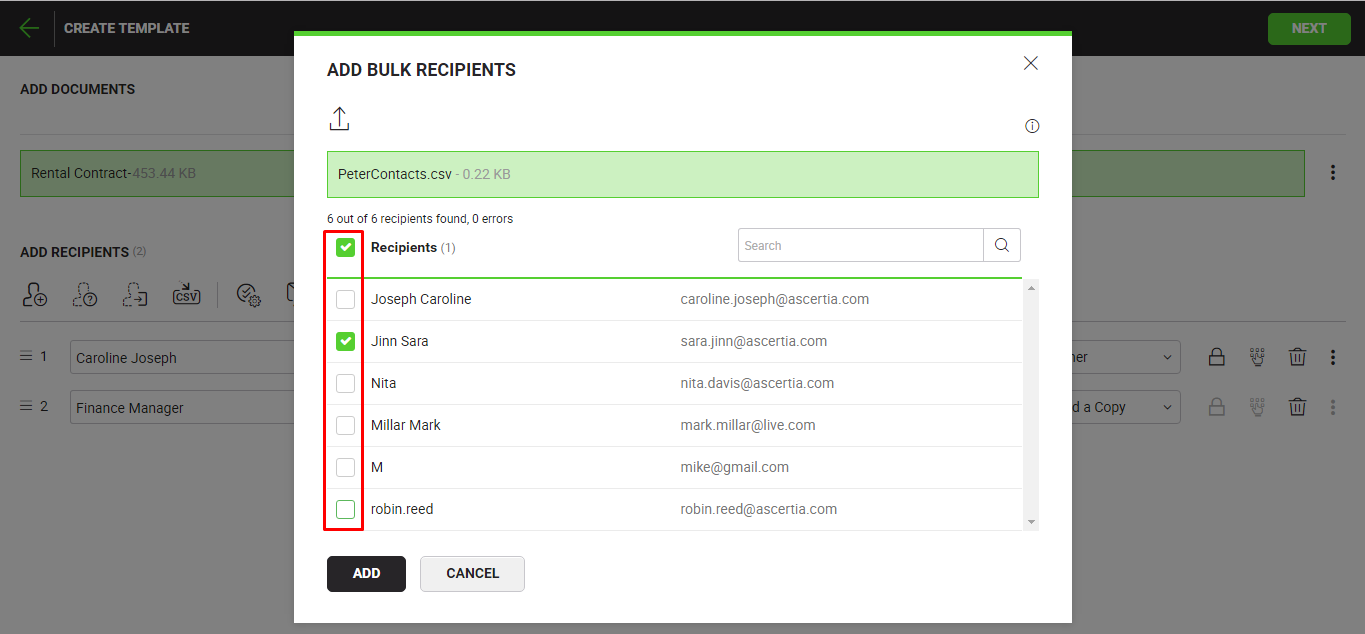A recipient is a pre-configured actual user/ group in a workflow. While a placeholder is a kind of blank user, who may be unknown at the time of document preparation. They are added during the workflow execution on their turn, by the immediate previous recipient. In such a case, a title field is defined for them in the workflow, which is then updated with the actual recipient.
Each type of user is assigned a definite role in a template, see the following table for details:
|
User Roles |
|
|
Roles |
Description |
|
Document Signer |
Being a signer, the recipient/ placeholder needs to sign a document. As per the workflow configuration, this signature can either be electronic or digital. After signing in the assigned signature field, a signer has to click the "Finish" button to complete the document signing. Alternatively s/he may use the "Decline" option to refuse it, or use the "Delegated" option to assign their role to someone else. Moreover, a signer should also fill in the assigned form fields, initials, and/ or in-persons fields (if any) before signing. Whenever a digital signature is made by any signer, the signature quota of the respective document owner's account will be consumed. |
|
Document Reviewer |
Being a reviewer, the recipient/ placeholder needs to approve a document by clicking the "Review" button. Alternatively s/he may use the "Decline" option to refuse it, or use the "Delegated" option to assign their role to someone else. Reviewing does not involve any signing activity. Moreover, a reviewer should also fill in the assigned form fields, and/ or initials (if any) before reviewing. |
|
Document Editor |
Being an editor, the recipient/ placeholder needs to update a document by clicking the "Submit" button. Alternatively s/he may use the "Decline" option to refuse it, or use the "Delegated" option to assign their role to someone else. Editing does not involve any signing activity. An editor should also fill in the assigned form fields, and/ or initials (if any) before updating. |
|
Meeting Host |
Being a meeting host, the recipient/ placeholder needs to facilitate the document signing process for the configured in-person signers. A host can give his/her device control to the (in-person) signers, and get their signatures in his/her presence. After getting all the signatures, a meeting host has to click the "Finish" button to complete the document hosting. Alternatively s/he may use the "Decline" option to refuse it, or use the "Delegated" option to assign their role to someone else. |
|
Send a Copy |
When the "Send a Copy" role is selected for a recipient, SigningHub emails the most recent copy (at that stage of workflow) of document to the recipient as an email attachment. The document copy is auto sent (on its turn) and does not require any human intervention. |
Add a recipient in the template
As you add a template document, the "Add Recipients" area will appear:

Add a placeholder in the template
From the "Add Recipients" area:

Add a logged-in user in the template
The logged-in user is added as a placeholder in a template. When this template is applied on a document the logged-in user field will be automatically updated with the document owner. From the "Add Recipients" area:
 .
.
Add recipients through a CSV file
You can also add recipients through a CSV file. The file must have the valid email addresses of each recipient. SigningHub supports three different types of email headers: Primary Email, E-mail Address, and Email Address, to read the email address from the CSV file. This is a smart way for a document owner to add multiple recipients in a template through a single click.


Delete a recipient/ placeholder from the template

Change the recipients/ placeholders sequence
By default all the recipients and placeholders are added serially in a template. However, you can change their collaboration sequence after adding them, according to your document(s) approval flow. The set sequence is applicable to the serial workflows only. To change the sequence:

|
|
|